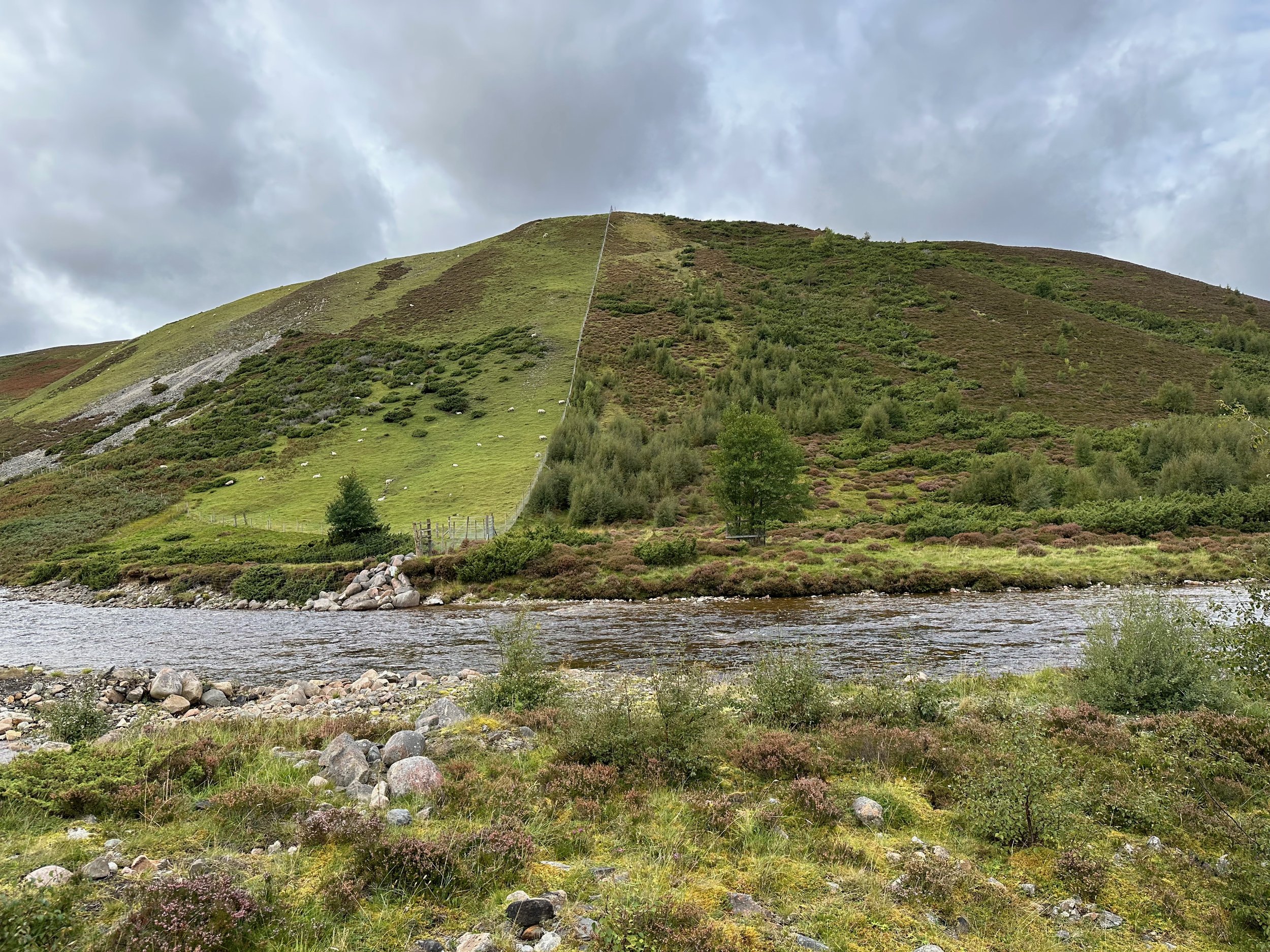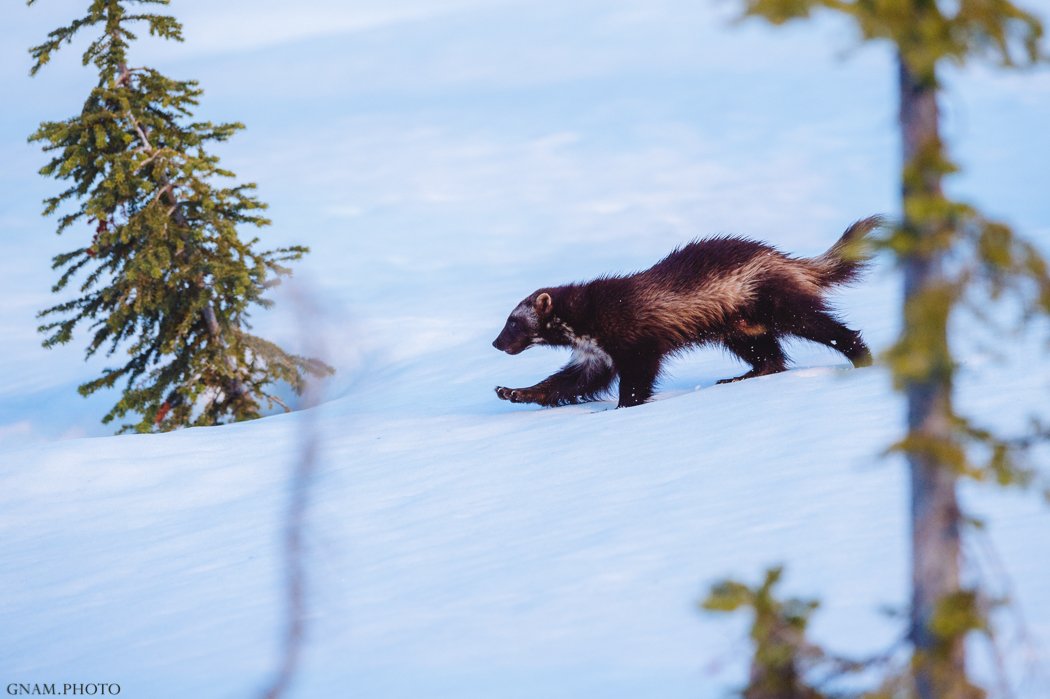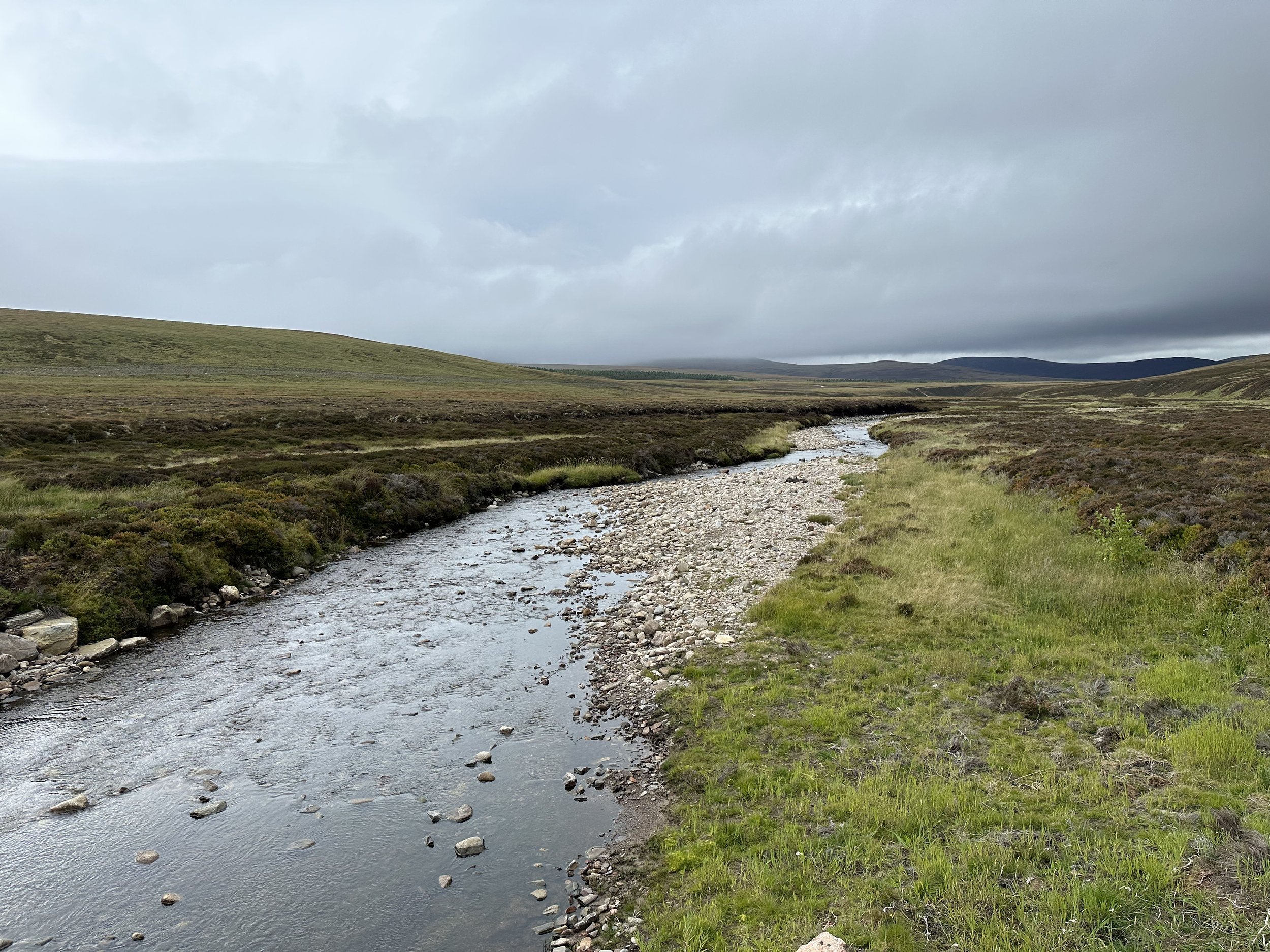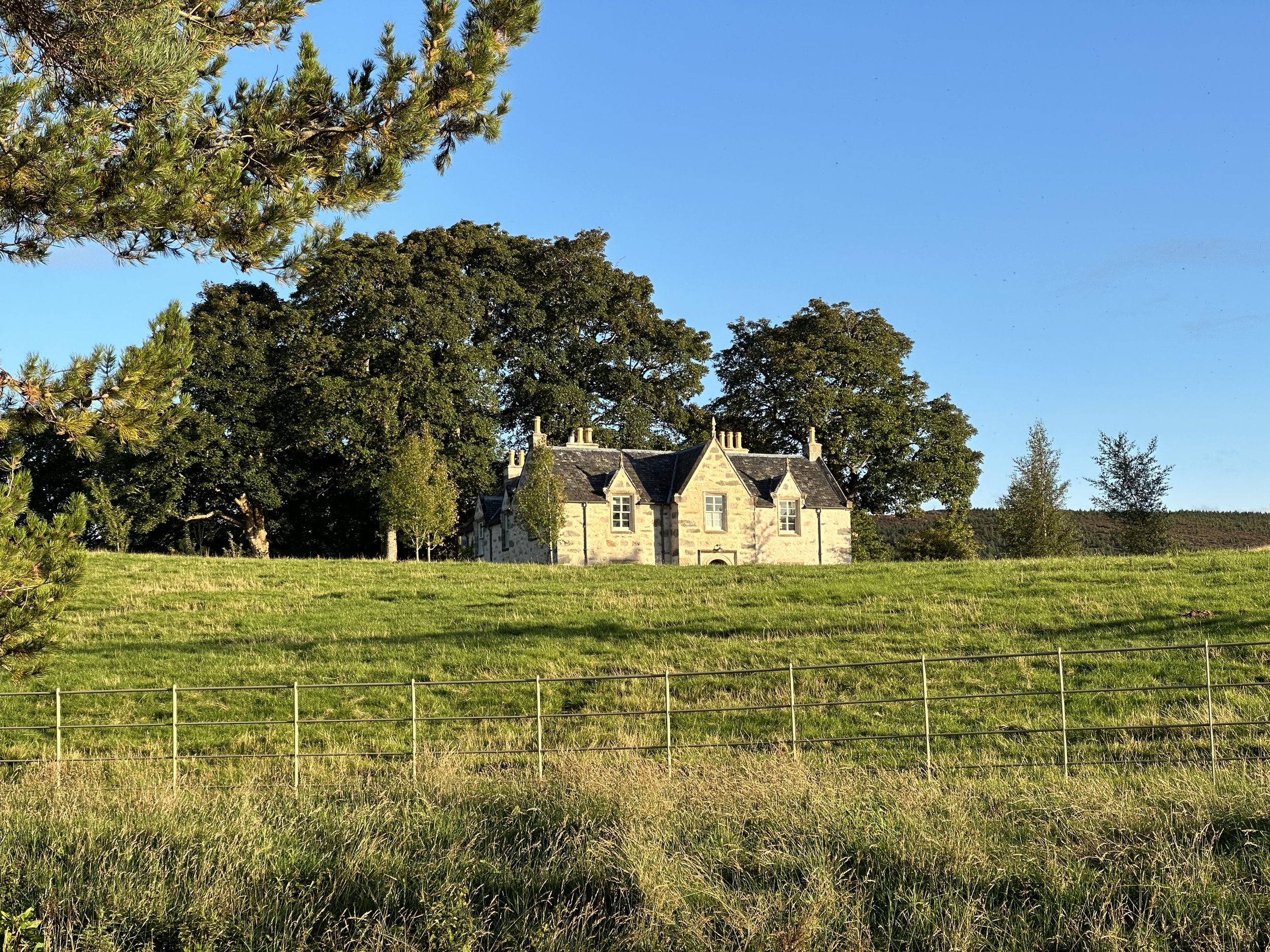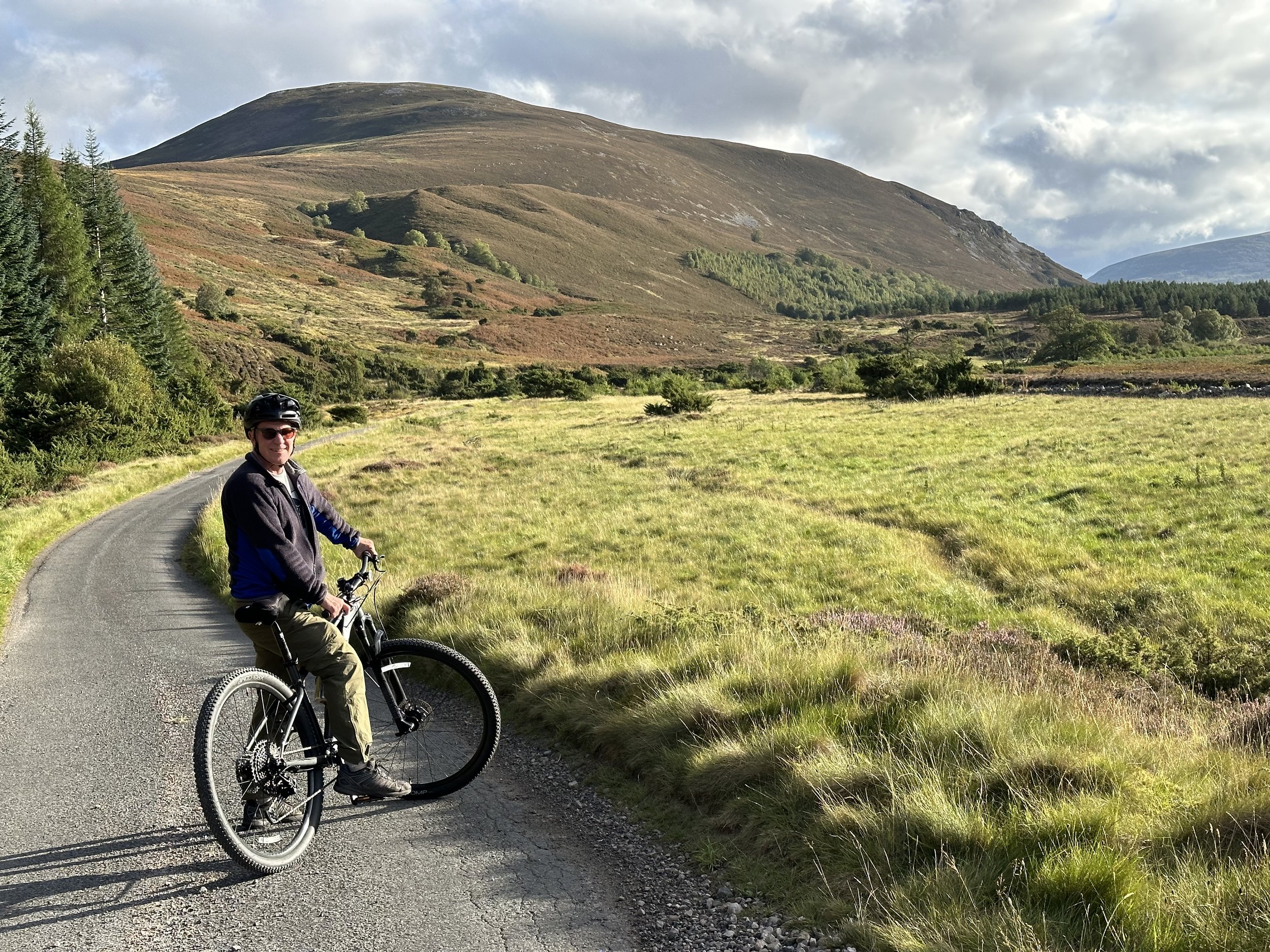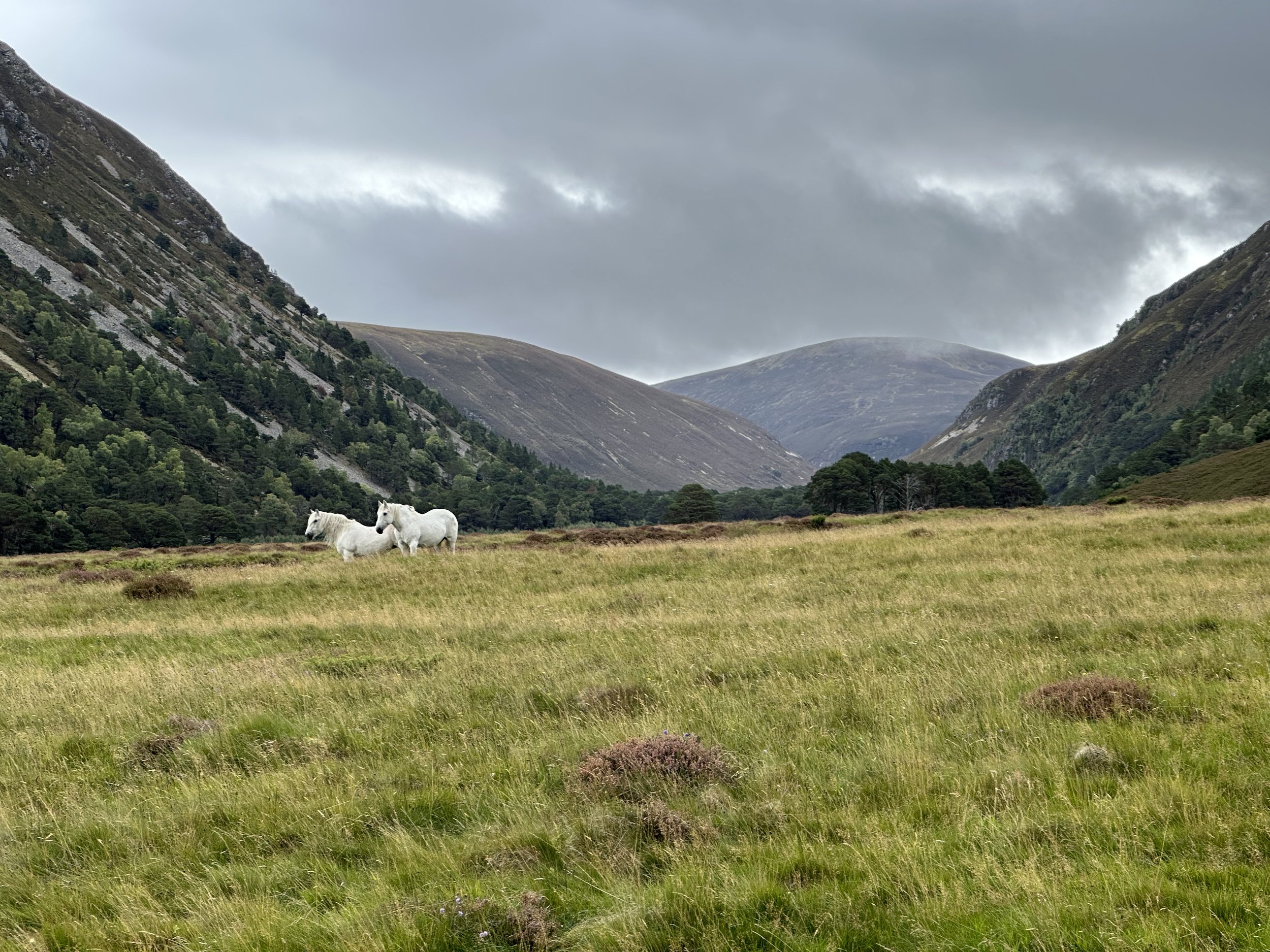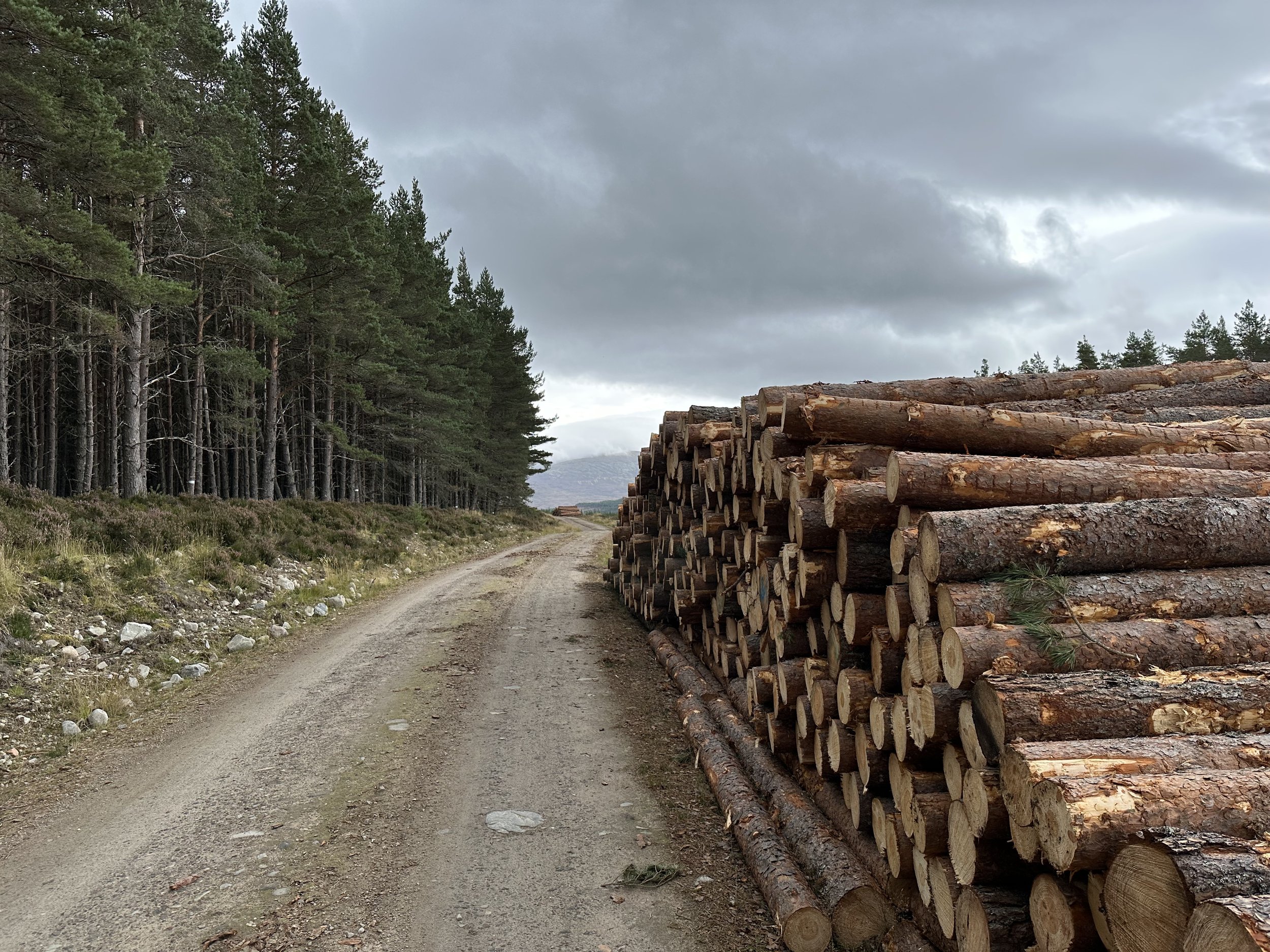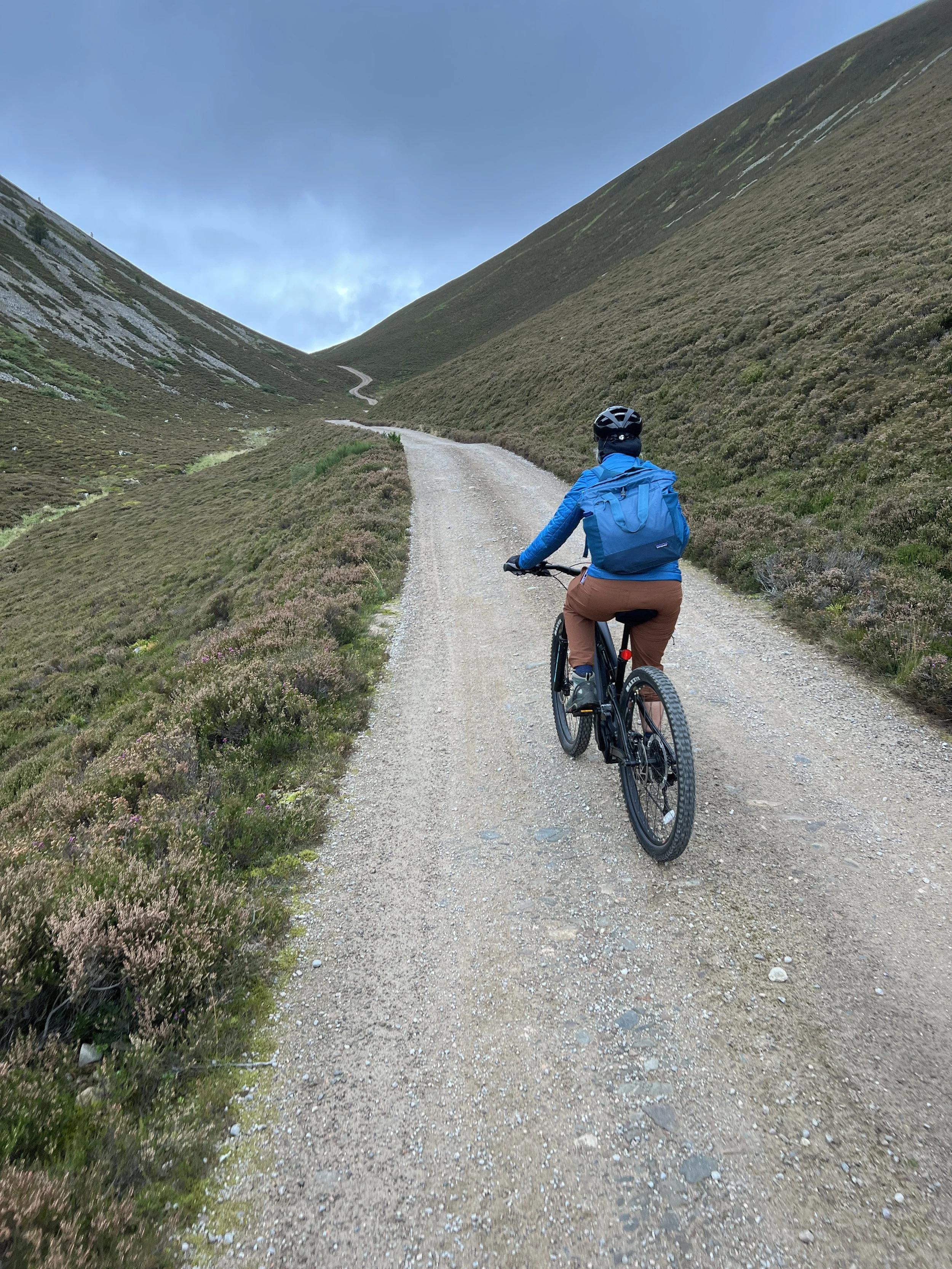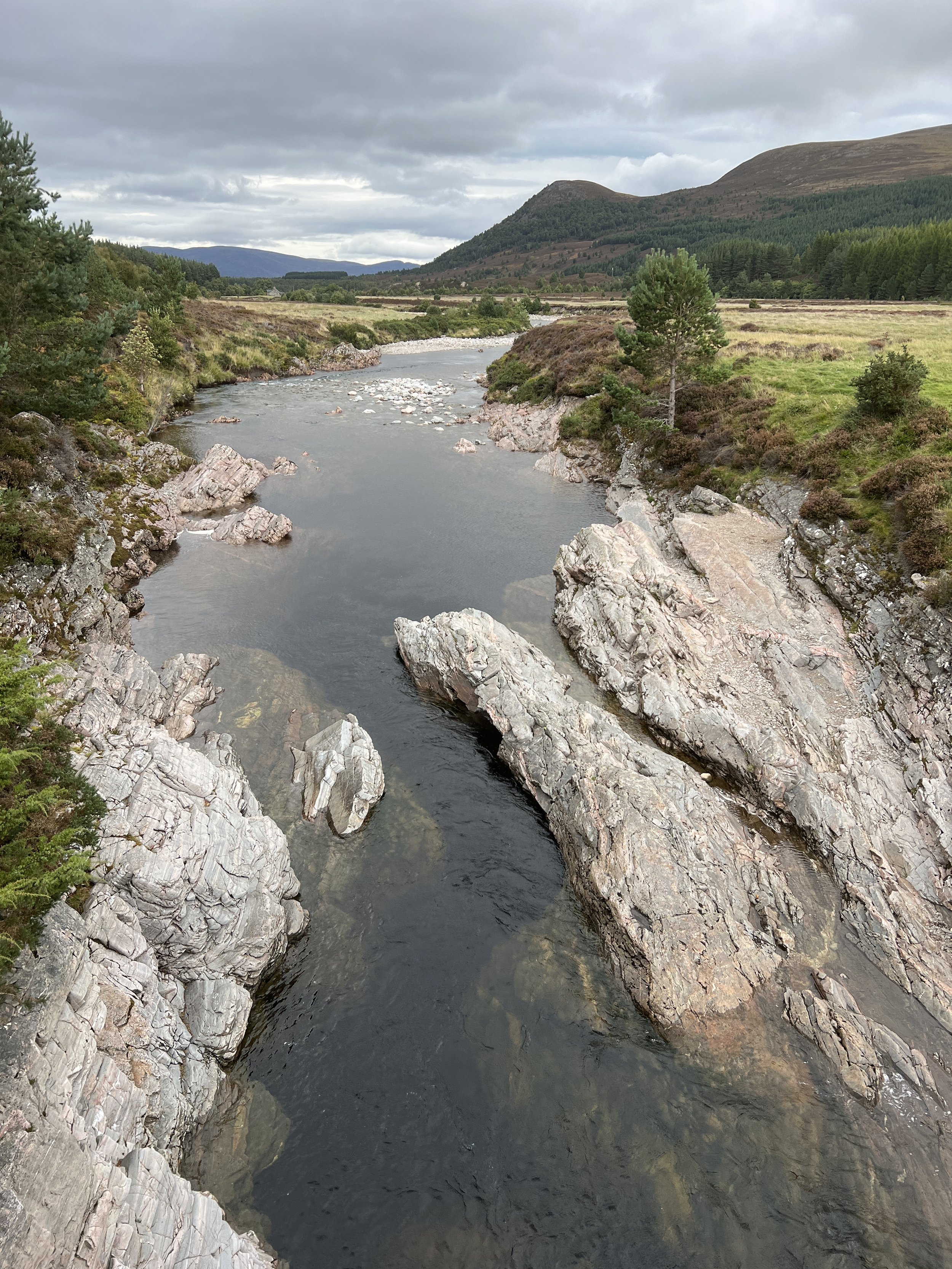Rewilding Scotland: A Photo Essay
Last fall, I visited Cairngorms National Park in the Scottish Highlands to attend the 8th International Martes Symposium. This intimate conference occurs every five years, inviting biologists who share a passion for members of the Martes Complex (martens, sables, fishers, tayras, and wolverines) to get together and discuss the latest science and conservation priorities pertaining to these little-studied animals.
Wolverine in the U.S. Rocky Mountains. Photo: Steven Gnam
The symposium itself was very compelling; where else can you exchange information and stories about martens and other cryptic carnivores with wildlife researchers from across the globe? My husband, Robert Long, gave a presentation about our pairing automated scent dispensers with remotely triggered cameras to monitor wolverines and lynx in Washington, and I was intrigued (and, at times, disheartened) to learn about extensive surveys and management projects in Scotland, Scandinavia, the Mediterranean, and elsewhere. But for me, the most rewarding part of my travels took place beyond the walls of the conference center.
Conference organizers did an excellent job of integrating field trips into the agenda, offering participants a glimpse of visionary efforts to rewild the Highlands by restoring native habitats and wildlife. Robert and I further explored such initiatives to rewild Scotland during our brief vacation following the symposium.
I’d visited northern Scotland twice before, most recently two decades ago. Like most tourists, I was immediately smitten with the panoramic views and the rich palette of heathers, but I also remember commenting to my friend and host (Dr. Malcolm MacGarvin) that the landscape felt denuded of wildness in a certain way. Indeed, the large carnivores who once shared terrain with the MacKay clan in my genes have long been gone from the Highlands; brown bears, wolves, and lynx were killed off hundreds of years ago. Meanwhile, the native Caledonian Forest has been reduced to small remnants, as have old-growth forests the world over.
Caledonian Forest in autumn, by Lochan Uaine (Small Green Loch) on the pass between Glenmore and Abernethy National Nature Reserve. Scots pine (dark green), juniper (slightly light green, at the bottom), willow (light green, at the top), and grey/downy birch (antique gold). Photo: Malcolm MacGarvin
Now conservationists and managers, backed by philanthropists, are taking the long view of what it means to rewild a vastly altered landscape at a grand scale.
Below I share a few photographic highlights from this adventure. Before we begin, however, here are a few facts* for context:
The area of Scotland is ~80,000 square kilometers (just a wee dram smaller than the Greater Yellowstone Ecosystem)
50% of Scotland is owned by 500 people
14.5% of Scotland is managed for stalking (hunting) 400,000 red deer
Nearly 5.5 million people coexist with 6 million sheep
4% of the land is covered with native woodland
Ten thousand years ago man arrived to find a pristine wilderness of rich climax vegetation: Scots pine, sessile oak and downy birch, willow, hazel and alder, rowan and gean, with a patchwork of heather clearings and slopes, mountain grasslands and sphagnum-rich bogs, with arctic-alpine scrub rising to the moss and tundra-lichen summits. There were some five million acres of upland through which reindeer, red and roe deer, wild ox, brown bear, wolves, lynx, beaver, and wild boar roamed…
—Sir John Lister-Kaye
*From: Scotland, A Rewilding Journey. Susan Wright, Peter Cairns, Nick Underdown (2018).
And Now…Snapshots of Rewilding
Caingorms Connect is a partnership of land managers committed to restoring native habitats, species, and ecological processes across 600 square kilometers of Cairngorms National Park. Here, near Aviemore, I felt conflicted about seeing clearcuts as a reality of Scotland’s rewilding story; restoring native forest requires removing Sitka spruce and other nonnative trees that were seeded like wildfire in plantations. (An interesting side note: Half of Cairngorms Connects is funded by Danish billionaire Anders Holch Povlsen, who owns the conservation organization, Wildland.)
Fences are used to protect plantings of Scots pine and other native species from red deer, roe deer, and rabbits.
Twenty Scottish wildcats were reintroduced to this area in 2023, all of whom survived. In 2024, beavers will be next. Photo: Peter Trimming from Croydon, England, CC BY 2.0 <https://creativecommons.org/licenses/by/2.0>, via Wikimedia Commons
One major conservation goal in Scotland is to protect capercaillie, the largest grouse in the world. These birds were hunted to extinction in the 1700s, then reintroduced from Swedish stock in the 1800s. Capercaillie are now culturally valued, rare, and protected. Image: Harvie-Brown, J. A. (John Alexander), 1844-1916, via Wikimedia Commons.
Abernethy National Nature Reserve runs from Nethy Bridge to the summits of Ben Macdui and Cairngorm in Cairngorms National Park. The manager who showed us around told us that they stopped killing foxes here in 2018, as he and his colleagues don’t see this action as necessary to protecting capercaillie. I found his perspective to be refreshing; foxes, weasels, and many other wildlife are still heavily persecuted as pests throughout much of Scotland. The manager added: “Personally, I’d like to see wolves and lynx back here. If they can have wolves in Belgium, we can have them here.” Bravo!
Roughly 800 deer are shot each year at the Abernethy Reserve to aid in native tree regeneration. In the absence of native predators, deer populations explode.
Beautiful ruins like this one near Kingussie remind us that the human footprint in Scotland runs deep and wide through time.
After the conference, we enjoyed a couple of days at the stunning Killiehuntly Farmhouse—meticulously managed accommodations on Povlsen’s Killiehuntly Estate. Managers have planted 1.5 million trees on this property.
A bothie on the Killiehuntly Estate.
Bicycling through Killiehuntly is a journey through the past, present, and rewilding of the Scottish Highlands.
Glen Feshie, neighboring property to Killiehuntly, is the crown jewel of rewilding in the Highlands. When Povlsen purchased the property in 2006, some areas hosted 22 deer/square kilometer. Controversial culling reduced this number to 2 deer/square kilometer.
Before and after (below) photos shown to me by Wildland guide Grant Shorten. Note the regeneration in the “after-culling” photo.
Glen Feshie. Need I say more about this unearthly place?
Once again, the removal of nonnative trees (here, at Glen Feshie) is a highly visible—and unsightly—tool for bringing back the Caledonian Forest.
My first experience on an e-bike, and in a good place to have one!
River Feshie—once a major spawning ground for salmon, and still home to trout and the today-much-rarer salmon.
It’s fascinating to think about what this landscape will look like 200 years from now. Will native wolves, lynx, and maybe even brown bears have a place in Scotland’s future? A woman can dream.
